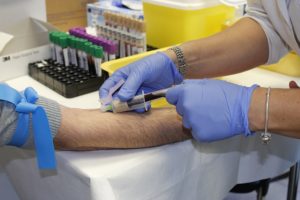The word ‘superbug’ is often thrown about in the media referring to diseases that simply seem to be unable to be killed. What the media is really referring to when they say this word is antimicrobial resistance.
Antimicrobial resistance is becoming an issue in the modern world to the extent that the World Health Organisation has responded and is attempting to educate people to join the fight against antimicrobial resistance. Much of the issue has come about as a result of rumours and misinformation handed down to people about these diseases and thus shaping their behaviour.
What is antimicrobial resistance?
Antimicrobials are a category of drugs that are used to fight against microbial infections such as bacteria, viruses and fungi. You may be more familiar with the term antibiotics, a drug designed to fight against bacteria. In today’s world, people are far too often given drugs in the wrong situation as a way of doctors ensuring that their patients stay happy. Using antibiotics to treat a virus is one example that allows the microbes to develop adaptations against antimicrobials accelerating their resistance. This means that common infections will become harder to treat and the development of medicine will be under extreme pressure.
How do we turn it around?
Education the public is one of the first and more important steps that needs to be taken. The major issue, as touched on above, is that people feel a sense of validation when they visit the GP and they are given a prescription for antibiotics as they leave. It assures them that they are really sick even if it may be a viral infection and not bacterial. This is because the general public simply are not well enough informed about infections and diseases and how they are treated.
The national Antimicrobial Resistance Strategy has already employed advertisements on TV and in newspapers through NPS MedicineWise that is aimed at increasing awareness. However, simply raising awareness has had a limited impact and it is not surprising. People need to become participants and that requires a more personal approach.
Highlighting how it will impact on people personally is the only way to get them to act. A great example was the anti-smoking campaign run by the government that outlined the consequences of smoking as people saw the harmful effects (e.g. gangrened toes and toothless gums). People need to see ways that they can help and also be shown the impacts of antimicrobial resistance should it continue to grow. It needs to be seen how the resistance will impact people on a personal level.
People must understand the side effects of antibiotics and not just the benefits. Antibiotics can lead to poor gut health and childhood obesity so it may be worth constructing narratives that highlight this.
The fight against antimicrobial resistance is one that needs to have multiple avenues. Whilst research and regulation is something that needs to be looked at, with the current attitudes towards antibiotics, consumer engagement is a telling area. Communicating the impacts and showing the personal effects through hard hitting advertisements that resonate with people is likely to be necessary.
David Smith was born and raised in Calgary Alberta and loves to share his passion for health and fitness with others. Apart from running his own podcast, which uploads weekly shows that covers current health trends, he spends his time canoeing and backpacking. David recently spent a summer working at the CFIA as a health supplement reviewer. In regards to academics, David studied kinesiology at Guelph University.





